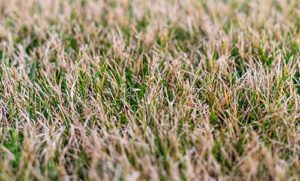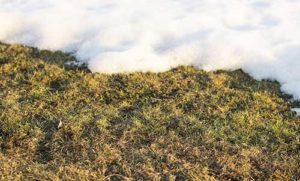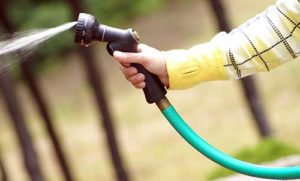Why Watering Your Lawn in the Winter is Important
The winter season in the midwest should not mean the end of your lawn. The grass in your yard can only survive the dry cold season with care. It is advisable to water the lawn occasionally to help it thrive through the cold months.
Grass, like many plants, adapts to cold weather. Since plants cannot draw moisture from frozen water, they remain dormant to preserve the little water in their system. The reason your lawn turns brown during winter is due to the grass being in survival mode.
However, your grass’ adaptive ability in low humidity only lasts about three to four weeks. Beyond this period, they begin to die as the winter season in the midwest goes through February.
You do not want to be planting grass seasonally. It is not feasible. Therefore, supplying the grass with moisture is crucial for its survival. So long as there is visible growth underneath, watering is pertinent.
Watering your lawn in winter is not a willy-nilly procedure; there needs to be some planning and thought in the process. Low temperatures interfere with all mechanisms significant in plants taking in water.
The soil and plant roots are frozen, making it hard to absorb water. Available leaf cells have an ice film cover that does not allow them to draw water from the atmosphere. Your watering time and water amount are crucial as you might make a bad situation worse.
A Lawn Still Needs Water When the Grass is Dormant

Watering the grass is the only way your grass can get moisture. The water keeps the grass crown alive a little longer. Watering during winter is not necessarily to green the grass, but to prolong the survival stage longer.
By watering the grass, you enable it to remain dormant until spring when it can green again. The roots are the main target during watering because of the grass-blade’s incapacity to absorb humidity from the air.
Additionally, watering the grass during winter helps keep the roots alive. Roots die fast when they are dry. A plant can bounce back to health when temperatures start rising as long as the root system is living.
Winter enhances dryness in the soil as the ice remains on the top layer of the ground and does not penetrate deep into the grass’ root system. Therefore, assuming browning is solely a result of dormancy can cost you the entire lawn. Watering the grass consistently in the winter is a sure way of keeping the roots alive.
Watering Grass After it Snows

Grass growing in dry climates usually have a root system plunging deep into the soil to obtain water. Similarly, your grass has this intricate root system. However, winter temperatures freeze water down under the ground as well. Therefore, watering the roots is crucial for the survival of your plant.
As you water the grass, focus on the roots. The water strengthens the root fibers and stems, keeping them from drying out. When the roots thrive, the grass also flourishes.
Targeting the roots is one thing and when to water them is another crucial factor altogether. The purpose is to make sure that the roots absorb as much water as possible and not pour more water into the soil. Using more water than necessary can cause the roots to rot and kill the grass. Remember, your grass species has adaptations suitable for dry weather.
The best time to water grass in winter is after snow falls. When the snow melts, the roots chase after the water enabling them to penetrate the soil. The pursuit encourages the roots to grow deeper and cover a substantial area on the ground. A robust root system strengthens the grass and promotes health.
Deep watering is also vital because it decreases water loss through evaporation. The water closest to the surface of the soil evaporates faster. In winter, the water can quickly freeze as temperatures plummet. Targeting lower ground levels eases the process for the roots to find water underground.
Should You Water Grass When It’s Cold Outside?

Your grass needs a substantial amount of water during winter to stay healthy, as the land still gets parched during winter. If you ignore their water needs, you may need to re-plant in spring. The essence of watering is to keep the plant dormant until temperatures become warmer and precipitation morphs from ice to water.
Here is a plausible way to go about watering during winter:
- Water the grass during warm winter temperatures to enable maximum water absorption in the soil.
- Avoid watering in the evening because the water freezes as temperatures begin to fall.
Water the grass once or twice every month. The plant is already in survival mode so a little goes a long way. - Most sprinklers freeze during winter, therefore prepare a hose-end sprinkler or a watering wand for watering during the cold season.
- The ground should not become soggy from watering, as waterlogging enhances root rot. Alternatively, water in short periods and allow water to soak in before re-watering.
How Much Water to Use in the Winter Months
The grass lawn does not need as much water during winter as it does in the summer. When temperatures are hot and dry, grass loses water faster through transpiration. Evaporation through the soil is also high because the sun is scorching hot. The earth absorbs and retains this heat for longer as well. During summer, watering weekly or by-weekly is crucial.
On the other hand, winter offers a unique kind of dryness. Moisture is not available because water freezes at below-zero or near-zero temperatures. Therefore, plants cannot access moisture from the atmosphere or the roots. Occasionally, the temperatures warm up, allowing the snow to thaw, creating a bit of water accessible for the roots.
Additionally, while plants are in full function mode during summer, making food and storing it up, the opposite occurs in the winter when they become dormant. The grass blade browning reduces the rate of photosynthesis, which requires the plant to use water and other stored nutrients.
The dormant state is similar to hibernation in animals. The grass utilizes nutrients slowly until they exhaust their stores. Therefore, they only need a substantial amount of water to survive the cold season, as too much water with low evaporation and transpiration rates will only make them rot.
Immediately temperatures freeze with free water in the soil, then ice crystals form, causing the roots to burn. It is advisable to water in moderation. Remember, the aim is not to keep the grass green but to prolong its dormancy which prevents dying.
Grass can thrive through the winter season with minimal care. Ensure you access your lawn needs to know the appropriate measures to take on time. If you can still see some green, it means the grass is alive and healthy. Remember browning does not mean death, it shows dormancy. Keep watering the grass to help it survive the harsh midwest winter season and in the spring, the green lawn will be worth the effort.
Professional Winter Lawn Care Service
Hire a professional lawn care company to take care of your winter lawn care needs, and save yourself some time. Ryan Lawn & Tree has over 35 years of experience in lawn maintenance and offers our services throughout every season. Contact us today to find out more about our services and how we can help your lawn to thrive.









